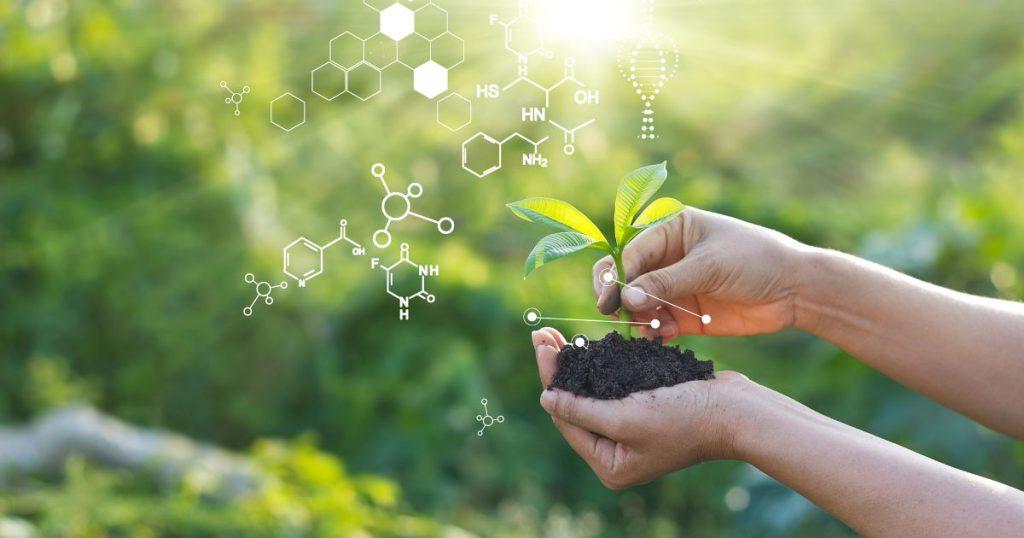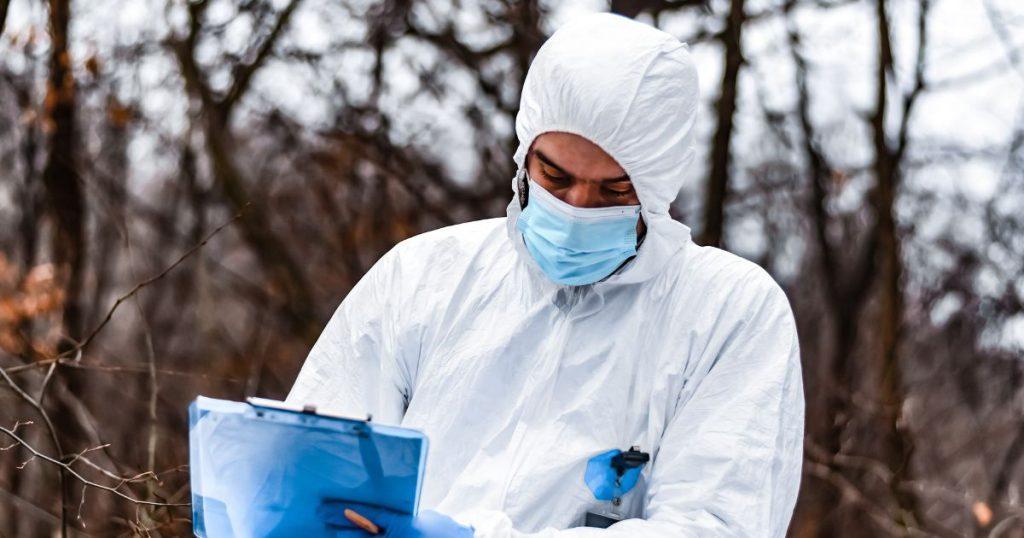The Biochemical basis of environmental toxicology
Table of Contents
Biochemical basis of environmental toxicology
| Toxin | Biochemical Interaction | Potential Health Impact |
|---|---|---|
| Lead | Mimics calcium and zinc in the body, disrupting enzyme function and bone structure | Neurological problems, kidney damage, weakened bone structure |
| Mercury | Binds to sulfur-containing compounds in the body, disrupting enzyme function | Neurological problems, kidney damage |
| Pesticides | Interfere with hormone signaling | Reproductive issues, developmental problems |
| Industrial Chemicals | Can disrupt hormone signaling and other biochemical processes | Various, depending on the specific chemical and its interactions |
Diving headfirst into the “Biochemical basis of environmental toxicology” might sound like a mouthful, but it’s as exciting as a thriller movie! This rollercoaster ride will unravel the mysteries of how toxins play with our body’s biochemistry, and trust me, it’s a plot twist you don’t want to miss!
The biochemical basis of environmental toxicology offers us a deeper understanding of how our bodies interact with environmental toxins and how we might protect ourselves.

Introduction
Let’s delve into the fascinating world of biochemistry and its profound implications in understanding environmental toxicology. As we embark on this journey, we’ll explore the intricate dance of molecules within living organisms and how they interact with environmental toxins. This exploration is not just an academic exercise; it’s a crucial step towards understanding how we can protect ourselves and our environment from harmful substances.
Biochemistry, the science of life at the molecular level, provides us with the tools to decode the complex interactions between toxins and our bodies. Environmental toxicology, on the other hand, studies the adverse effects of these toxins. Together, they form a powerful lens through which we can view and understand the impact of environmental toxins on life.
In this article, we’ll explore the biochemical basis of environmental toxicology, shedding light on how toxins interact with our bodies at the molecular level. We’ll also look at how biochemistry can help us mitigate the effects of these toxins. So, buckle up and get ready for an exciting journey into the world of biochemistry and environmental toxicology!
Key Takeaways from the Biochemical Basis of Environmental Toxicology
- Biochemistry provides the tools to understand how toxins interact with our bodies.
- Environmental toxicology studies the broader impacts of these interactions on ecosystems and human health.
- Understanding the biochemical basis of environmental toxicology can help us develop strategies to mitigate the effects of toxins.
Understanding Biochemistry
Biochemistry, at its core, is the study of the chemical processes that occur within living organisms. It’s a field that bridges the gap between biology and chemistry, focusing on the chemical reactions that make life possible. From the metabolism of food into energy to the replication of DNA, biochemistry is involved in every aspect of life.
Biochemistry allows us to understand how different substances affect our bodies. For instance, it can explain why some substances are beneficial, like vitamins and minerals, while others can be harmful, like toxins and pollutants. By understanding these biochemical processes, we can better understand how our bodies work and how different substances can affect our health.
The field of biochemistry has evolved significantly over the years, with new technologies and methodologies continually expanding our understanding of life at the molecular level. This continuous evolution has allowed us to delve deeper into the complexities of life, providing insights that have revolutionized medicine, agriculture, and environmental science.
The Intersection of Biochemistry and Environmental Toxicology
When biochemistry meets environmental toxicology, we begin to unravel the intricate biochemical processes that underpin the effects of toxins on living organisms. Environmental toxicology is a field that studies the harmful effects of various chemical, biological, and physical agents on living organisms. It’s a multidisciplinary field that draws on aspects of biochemistry, physiology, and ecology to understand the impact of toxins on our health and the environment.
Major Fields Contributing to Our Understanding of Environmental Toxicology
- Biochemistry: Provides insights into the molecular interactions between toxins and our bodies.
- Physiology: Helps us understand how toxins affect our bodies’ functions.
- Ecology: Offers a broader perspective on how toxins affect ecosystems and the planet as a whole.
Environmental toxicology and biochemistry intersect in many ways. For instance, biochemistry can help us understand how toxins interact with biological systems, while environmental toxicology can provide insights into the broader impacts of these interactions on ecosystems and human health.
This intersection is crucial in our modern world, where industrialization and urbanization have led to increased exposure to environmental toxins. By understanding the biochemical basis of environmental toxicology, we can develop strategies to mitigate the effects of these toxins and protect our health and the health of our planet.
Ways to Protect Yourself from Environmental Toxins
- Limit exposure to known sources of toxins, such as lead-based paint and contaminated water.
- Eat a diet rich in antioxidants, which can help your body neutralize toxins.
- Stay informed about new research and developments in the field of environmental toxicology.

Biochemical Processes and Toxin Interaction
To truly grasp the biochemical basis of environmental toxicology, we must first understand how toxins interact with our body’s biochemical processes. Toxins, whether they come from the environment or are produced by our bodies, can interfere with these processes, leading to a range of health issues.
For instance, heavy metals like lead and mercury can disrupt enzyme function, affecting everything from energy production to DNA replication. Pesticides and industrial chemicals can interfere with hormone signaling, leading to reproductive issues and developmental problems. Even natural toxins, like those produced by bacteria and fungi, can disrupt our body’s biochemistry, leading to diseases like botulism and toxic shock syndrome.
Understanding these interactions is crucial for developing strategies to mitigate the effects of toxins. For instance, if we know how a particular toxin interacts with our biochemistry, we can develop drugs or other interventions to block this interaction and protect our health.
Common Environmental Toxins and Their Sources
| Toxin | Common Sources |
|---|---|
| Lead | Old paint, contaminated water, lead-acid batteries |
| Mercury | Fish, dental amalgams, broken thermometers |
| Pesticides | Agricultural runoff, non-organic produce |
| Industrial Chemicals | Various, depending on the specific chemical |
Case Study: A Biochemical Perspective on a Common Environmental Toxin
Let’s take a closer look at a common environmental toxin and explore its impact from a biochemical perspective. Consider lead, a heavy metal that’s been widely used in industries like paint manufacturing and battery production. Despite regulations limiting its use, lead continues to be a significant environmental toxin, affecting millions of people worldwide.
From a biochemical perspective, lead is particularly insidious because it can mimic other metals that play essential roles in our body’s biochemistry. For instance, lead can replace calcium in our bones, leading to weakened bone structure and increased risk of fractures. It can also replace zinc in enzymes, disrupting their function and leading to a range of health issues, from neurological problems to kidney damage.
Understanding the biochemical basis of lead toxicity has been crucial in developing strategies to mitigate its effects. For instance, chelation therapy, which uses compounds that bind to lead and remove it from the body, has been used successfully to treat lead poisoning.
Biochemical Processes Affected by Toxins
| Biochemical Process | How It Can Be Affected by Toxins |
|---|---|
| Enzyme Function | Toxins can disrupt the function of enzymes, leading to a range of health issues |
| Hormone Signaling | Toxins can interfere with hormone signaling, leading to reproductive and developmental problems |
| Bone Structure | Toxins like lead can replace calcium in bones, leading to weakened bone structure |

The Role of Biochemistry in Mitigating Environmental Toxicology
Biochemistry doesn’t just help us understand the problem; it also points us towards potential solutions in mitigating the effects of environmental toxins. By understanding how toxins interact with our biochemistry, we can develop strategies to protect ourselves and our environment.
For instance, understanding the biochemical pathways affected by a toxin can lead to the development of drugs that block these pathways, reducing the toxin’s impact. Similarly, understanding how toxins are metabolized and excreted can lead to interventions that speed up these processes, reducing the time the toxin spends in our bodies.
Biochemistry can also help us develop strategies to reduce our exposure to environmental toxins. For instance, understanding how toxins move through the environment can lead to interventions that reduce their spread, protecting both human health and the health of our ecosystems.
Strategies for Mitigating the Effects of Environmental Toxins
| Strategy | Description |
|---|---|
| Drug Development | Develop drugs that block the biochemical pathways affected by toxins |
| Speeding Up Metabolism and Excretion | Develop interventions that speed up the metabolism and excretion of toxins |
| Reducing Exposure | Understand how toxins move through the environment to develop interventions that reduce their spread |
By understanding how toxins interact with our biochemistry, we can develop strategies to protect ourselves and our environment.

Conclusion
The biochemical basis of environmental toxicology offers us a deeper understanding of how our bodies interact with environmental toxins and how we might protect ourselves. By delving into the intricate dance of molecules within our bodies and understanding how they interact with environmental toxins, we can develop strategies to mitigate the effects of these toxins and protect our health and the health of our planet.
Future Directions in the Study of the Biochemical Basis of Environmental Toxicology
- Development of new drugs and interventions to block the biochemical pathways affected by toxins.
- Research into how toxins are metabolized and excreted, with the goal of speeding up these processes.
- Continued efforts to reduce the spread of toxins in the environment.
Biochemistry and environmental toxicology, though distinct fields, are deeply interconnected. By bridging the gap between these fields, we can gain a holistic understanding of the impact of environmental toxins and work towards a healthier, safer world.
Disclaimer: This article is intended for informational purposes only. It is not a substitute for professional medical advice, diagnosis, or treatment. Always seek the advice of your physician or other qualified health provider with any questions you may have regarding a medical condition.
For more insights into the world of biochemistry, feel free to explore the Biochemistry category on my blog. Also see my index page on Biochemistry
See also my other posts: Biochemical basis of endocrine disorders and Biochemical aspects of exercise and sports performance
Frequently Asked Questions
What is the biochemical basis of toxicity?
The biochemical basis of toxicity refers to the chemical processes and reactions that occur in living organisms due to exposure to toxic substances. This includes how toxins interact with biological molecules, how they affect cellular functions, and how the body metabolizes and eliminates them.
What are the basics of environmental toxicology?
Environmental toxicology is the study of the harmful effects of various chemical, biological, and physical agents on living organisms. It involves understanding how these agents cause harm, how they move through the environment, and how their harmful effects can be mitigated or prevented.
What is the molecular basis of toxicology?
The molecular basis of toxicology involves understanding how toxic substances interact with molecules in the body at a cellular level. This includes how toxins bind to specific molecules, alter their function, and potentially cause cellular damage or death.
What are the 4 principles of toxicology?
The four principles of toxicology are:
1. Dose-Response: The effect of a substance depends on the dose.
2. Exposure: Effects depend on the duration and intensity of exposure.
3. Individual Susceptibility: Different individuals respond differently to the same dose of a substance.
4. Chemical and Physical Behavior of the Toxin: The nature of the toxin and its behavior in the environment and within the body.
What is meant by biochemical basis?
The biochemical basis refers to the underlying chemical reactions and processes that occur in living organisms. It’s the foundation of how life functions at a molecular level, from metabolism to DNA replication.
What biological factors determine toxicity?
Several biological factors determine toxicity, including the individual’s age, sex, health status, and genetic makeup. Additionally, the route of exposure, the duration and intensity of exposure, and the body’s ability to metabolize and eliminate the toxin also play a role.
What are the different types of environmental toxicology?
Environmental toxicology can be divided into several sub-disciplines, including aquatic toxicology, terrestrial toxicology, and ecotoxicology. Each focuses on the impact of toxins in different environments and ecosystems.
What is the difference between toxicology and environmental toxicology?
While toxicology is the study of the harmful effects of substances on living organisms, environmental toxicology focuses specifically on the impact of environmental pollutants on living organisms and ecosystems.
What is an example of environmental toxicology?
An example of environmental toxicology could be studying the impact of oil spills on marine life. This would involve understanding how the oil affects different species, how it moves through the water, and what long-term effects it might have on the ecosystem.
Further reading
Biochemical strategies for the detection and detoxification …
Sean Schepers is a third-year Medical Technology student at Mahidol University with a passion for all things health and medicine. His journey into the world of medicine has led him to explore various fields. Sean's blog posts offer a unique perspective, combining his academic insights with personal experiences. When he's not studying or blogging, Sean enjoys keeping up with politics and planning his future career in medicine.
In addition to his studies, Sean serves as the chairman of the Rights, Liberties, and Welfare Committee, a role that reflects his commitment to advocacy and social justice. Beyond his academic pursuits, Sean offers tutoring services in English and Biology, further demonstrating his dedication to education and mentorship. His journey is one of continuous discovery, and he invites others to join him as he explores the dynamic and transformative world of medical technology.


